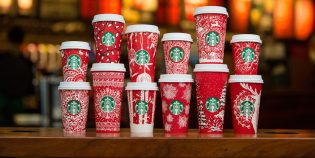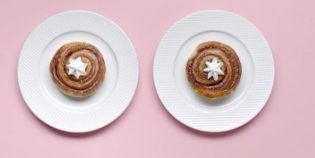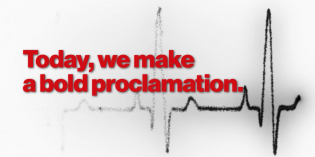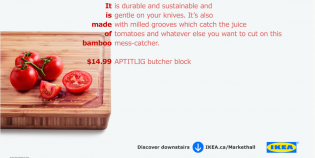Here’s a sneak peek at our April 9 issue.
Game 7 2011 went from religious experience back to bland corporate carriage
Even now, you find that night difficult to fathom.
 One moment you’re in the grip of a rapidly escalating religious experience, one that began nine months earlier, and slowly, slowly, then suddenly took off—to the verge of revelation. You gave the brand thousands of dollars to participate. The next moment your photo’s plastered across Facebook. If you’re lucky, an arrest warrant’s issued. If you’re lucky—because everybody, including the brand that took your money, is advocating for your public lynching, too.
One moment you’re in the grip of a rapidly escalating religious experience, one that began nine months earlier, and slowly, slowly, then suddenly took off—to the verge of revelation. You gave the brand thousands of dollars to participate. The next moment your photo’s plastered across Facebook. If you’re lucky, an arrest warrant’s issued. If you’re lucky—because everybody, including the brand that took your money, is advocating for your public lynching, too.
Your crime is that you so fully engaged the NHL brand as to inhabit and transcend it.
You did everything it asked of you. They gave you a gold star as you passed through each level of loyalty into unprecedented territories of devotion—you drank more Molson product, wore more officially licensed gear, paid more Ticketmaster service charges, spent hundreds of hours with the partnering broadcasters, listened to Don Cherry call you and your tribe pussies, painted your F-150 in the brand’s colours and took to the streets and internet message boards to evangelize on that brand’s behalf. And then at the moment of apotheosis, as you reached for that next gold star—the leap of blind faith that is setting a police car on fire—the brand and all its affiliates backed away with wry smiles and righteous admonishment. Before you could crash back to reality, they’d issued statements about what constitutes a “real fan.”
Their revenues had come to approach $3 billion. Plus they had data that their market was capable of the same batshit devotion of soccer hooligans. Their campaign had incited you to “Play Every Shift,” and locally pressed the mantra “We Are All Canucks.” Message upon message, meticulously crafted to make you feel more a part of the game. Your riot was the NHL’s Dr. Frankenstein moment.
You would have been the Adam of their brand’s labours, but instead became their fallen angel.
The problem is that nobody ever created a religious super brand by telling their most loyal customers there’s no next shift. The brand can’t suddenly run out of levels just because the playoffs end. L. Ron Hubbard figured this out. Apple, with its endless schedule of new releases, knows it. Even Angry Birds and the clumsiest two-bit Jihadi cleric hawking tales of 72 virgins gets how to leverage the promise of a next level.
In our great post-modern sports rivalry, fans of the Major League Soccer team Portland Timber refer to Seattle supporters not as fans but “customers.” (They go so far to diss the Sounders’ sponsors, chanting “Suck my Xbox!”)
Central to the NHL’s brand is the fact that you bask in the illusion that it’s your team. The established wisdom is that the team and league define the fans. But what if it’s the other way around? It’s why the best hockey writing exists on blogs rather than the brand’s media partners.
One such blog, A Theory of Ice, suggests “the fan is the thing that holds constant for years on end. The memory of fans alone unites all the disparate elements—the symbols and names and cities and people—into a thing with a character all its own, that distinctive creature that is…” the Canadiens/Canucks/NHL.
When asked to compare the NHL to NASCAR, the NHL’s COO John Collins prefaced his answer with the words: “We have 53 million fans who love this sport as much as anybody loves anything in life.” He emphasized their tribal passion. The Nick Hornby Fever Pitch notion of consumption, where the bond between team and fan is “stronger than marriage.” The brand doesn’t compete with NASCAR or, ultimately, other sports leagues. It’s competing with institutions like marriage. As Liverpool professor and fan Alan Tapp said: “No one has their ashes scattered down the aisle at a Tesco.”
Beyond Tapp’s research (“The Loyalty of Football Fans—We’ll Support You Evermore?”), few academics have seriously studied fandom. The two most cited motivations driving fans are: BIRGing (basking in reflected glory) and CORFing (cutting off reflective failure). What makes you, the Canucks rioter, so startling is that you bridged these seemingly opposite sates of mind. You basked in the failure.
If they’re serious about building a religious brand, it’s maybe wise to adapt one of the more reliable selling features of the historic religious brands: the offer of forgiveness for one’s sins. That was the missed opportunity in last year’s NHL riots. (Even Todd Bertuzzi got a second chance.)
The brand should have dispatched Brendan Shanahan to bail you out of jail. He’d show up with that wary gaze that George Clooney wore through Michael Clayton. He’d carry a box filled with 72 Timbits. He’d publicly give incentives—season tickets for the families of the rioters who turned themselves in. Then he’d use the NHL’s legal department to collectively bargain on behalf of that group, creating a community service project, unprecedented in scale, to pay back the city for the damages. Not because the NHL supports smashing windows—or the notion of community building beyond photo ops with sick kids—but because the brand’s best customers can’t buy Timbits and Scotiabank products from jail (at least not until Stephen Harper’s megajails are finished). HBO could have filmed it all.
All you want is the chance to play the next shift.
For more commentary on customer relations and brand building, subscribe to Marketing.
Chris Koentges is a writer based in Vancouver. His work has appeared in The Walrus, Maisonneuve and Reader’s Digest.










